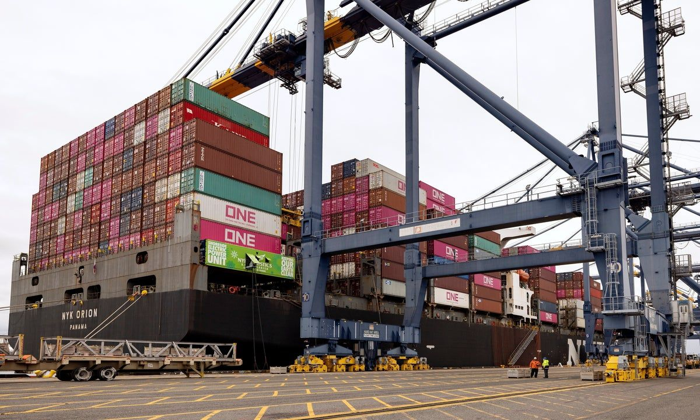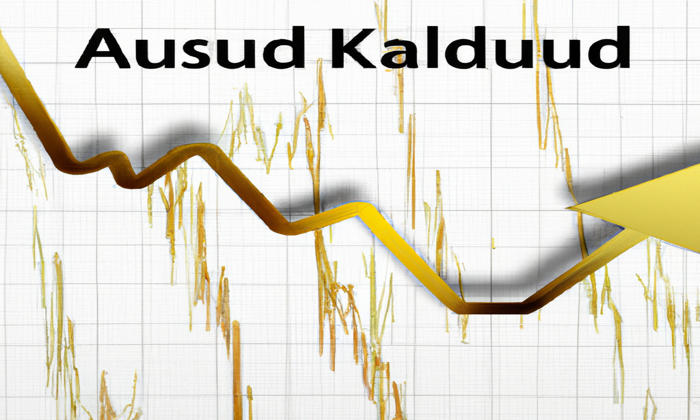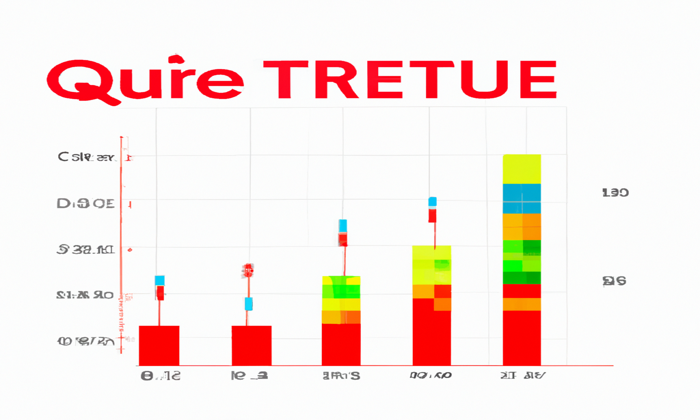Goldman Sachs recession forecast has taken a notable turn following President Trump’s recent announcement of a 90-day pause on the administration’s new tariffs. This decisive move has tempered trade war anxieties and prompted Goldman analysts to reassess their earlier recession baseline. Instead of predicting an economic downturn, they now foresee a modest GDP growth forecast of 0.5% by Q4 2025, supported by anticipated Federal Reserve rate cuts. The announcement sent ripples through the markets, invigorating investor confidence and propelling Bitcoin’s market reaction to new heights above $82,000. With core inflation expected to peak at 3.5%, Goldman signals a period of cautious optimism amid complex economic landscapes.
In light of the latest developments in economic projections, Goldman Sachs has recalibrated its outlook on potential economic downturns, instigated by recent trade policy changes. The financial giant, initially leaning towards a recession scenario, now delineates a more favorable growth trajectory, hinting at slight GDP improvements and mitigating inflation concerns. With impending Federal Reserve monetary policy adjustments, including possible rate cuts, market dynamics, particularly in cryptocurrency, have marked considerable fluctuations. The interplay of geopolitical decisions, like Trump’s tariff strategy, has significantly influenced economic sentiment and trading behaviors. Thus, as the landscape evolves, investors are closely monitoring these developments for clearer indications of future trends.
Goldman Sachs Recession Forecast: What It Means for Investors
Goldman Sachs’ updated recession forecast indicates a shift in economic sentiment, triggered by President Trump’s recent announcement to pause tariffs for 90 days. This decision alleviated concerns around escalating trade tensions, propelling markets upward. The firm’s analysts now suggest that the likelihood of a recession has decreased to 45%, reflecting increased investor confidence and optimism about future growth. It’s a pivotal moment for investors, as the previously dominant fears associated with trade wars appear to have subsided, allowing room for a cautious yet positive outlook on the economy.
The revised forecast also anticipates GDP growth of 0.5% by Q4 of 2025, marking a significant adjustment from their earlier predictions. This growth projection is bolstered by an expected three Federal Reserve rate cuts starting in June, which could further stimulate economic activity. For investors, understanding these shifts is critical; they must consider the potential implications for their portfolios. The pause on tariffs and subsequent rate cuts may influence asset allocations, especially in climate-sensitive sectors and high-risk assets like cryptocurrencies.
Impact of Trump Tariff Pause on Market Dynamics
The 90-day pause on new tariffs, announced by President Trump, has significant implications for market dynamics. By calming trade war fears, the pause allows investors to reassess their strategies without the overhang of uncertainty. Markets responded positively, with Bitcoin experiencing a remarkable surge past $82,000 and the Nasdaq posting nearly a 10% gain following the announcement. This reaction showcases investor sentiment shifting from risk aversion to a more optimistic outlook, as the temporary reprieve provides a window for potential growth.
Moreover, the decision to maintain lower reciprocal tariff rates instills a sense of stability in trade relationships, particularly with key international partners. While tariffs on Chinese imports were escalated to 125%, the overall sentiment remains bullish as countries begin dialogue on trade and currency strategies. Hence, the broader market reacts favorably to the prospect of diminished economic friction, paving the way for better corporate earnings and sustainable growth.
GDP Growth Forecast Amidst Economic Fluctuations
Goldman Sachs now projects a modest GDP growth of 0.5% by the fourth quarter of 2025. This forecast arrives at a time when global economies are experiencing uncertainty and fluctuating performance metrics. The optimism brought about by the Trump administration’s tariff pause suggests that growth may be achievable, albeit slower than desired. With the Federal Reserve expected to implement rate cuts, the potential for enhanced consumer spending and borrowing could foster an environment ripe for GDP growth.
However, challenges remain, particularly with inflation peaking at an anticipated 3.5%. Investors must remain vigilant, as high inflation can erode purchasing power and dampen economic growth. The interplay of these factors means that while growth is forecast, it will be accompanied by significant caution. Thus, understanding macroeconomic indicators will be essential for investors looking to navigate the complexities of the current financial landscape.
Inflation Peak and Its Economic Implications
Goldman Sachs estimates that core inflation is set to peak at 3.5%. This prediction has far-reaching implications for consumers and investors alike. High inflation typically signals increasing prices on goods and services, which can restrict consumer spending—a critical component of economic growth. As inflation rises, the Federal Reserve’s possible rate cuts become more complicated because they must balance the need for growth against the reality of rising prices.
In response to inflationary pressures, strategic investment choices become paramount. Investors may consider diversifying their portfolios to include inflation-hedged assets such as commodities and real estate. Additionally, stocks in sectors that can pass costs on to consumers may offer some protection against inflation. Overall, monitoring inflation trends is critical for making informed investment decisions in this shifting economic landscape.
Federal Reserve Rate Cuts: A New Strategy for Growth
The anticipated Federal Reserve rate cuts starting in June mark a strategic pivot intended to spur economic activity in the face of emerging challenges. With Goldman Sachs projecting a modest growth of 0.5%, these rate cuts are designed to lower borrowing costs and stimulate consumer lending. As credit becomes cheaper, businesses may feel encouraged to invest more in expansion efforts, potentially driving GDP growth even amid external uncertainties.
Rate cuts also carry implications for various asset classes, especially in an environment of rising inflation. For instance, lower interest rates might support higher equity valuations as future corporate earnings are discounted at a lower rate. However, it also raises concerns regarding asset bubbles within certain sectors. Hence, investors must not only leverage rate cuts to maximize gains but also remain wary of the underlying risks associated with sustained low rates within a potentially inflationary environment.
Bitcoin Market Reaction: A Boon for Cryptocurrencies
Following President Trump’s tariff pause announcement, Bitcoin’s price soared past $82,000, demonstrating a newfound investor confidence in cryptocurrencies as a safe haven. This rise can be attributed to the broader market’s positive reaction to reduced trade tensions. As traditional markets rallied, cryptocurrencies similarly gained traction, exemplifying their role in modern portfolios as a hedge against traditional market fluctuations.
Additionally, Bitcoin’s performance often correlates with macroeconomic events like tariff changes and interest rate decisions. As the Federal Reserve signals a pivot towards rate cuts, coupled with high inflation fears, investors might flock to Bitcoin, viewing it as a hedge against currency depreciation. Understanding these dynamics is essential for crypto investors looking to navigate market volatility and capitalize on emerging trends.
Navigating Market Volatility: Strategies for Investors
Market volatility has become a defining feature in recent months, especially in light of geopolitical and economic changes. Investors must adapt their strategies to not only withstand but thrive during these fluctuating conditions. One key strategy involves diversification across asset classes—balancing portfolios between equities, bonds, and alternative investments like cryptocurrencies can mitigate risk during downturns while capitalizing on upward trends.
Additionally, employing a long-term investment perspective could provide necessary resilience amidst short-term market noise. As Goldman Sachs’ forecasts suggest modest growth, investors should align their strategies with fundamental economic indicators and corporate earnings projections rather than reactive trading. This disciplined approach can limit emotional responses to market volatility, ultimately fostering better investment outcomes over time.
The Role of Geopolitical Factors in Economic Forecasts
Geopolitical factors play a critical role in shaping economic forecasts, often acting as catalysts for market movement and investment strategies. The recent pause on tariffs highlights how political decisions can directly affect economic environments, with Goldman Sachs adjusting its projections based on this key development. Recognizing the implications of geopolitical events allows investors to anticipate shifts in market sentiments and adjust their investment strategies accordingly.
Moreover, trade negotiations, particularly those led by influential figures like Treasury Secretary Scott Bessent, can significantly impact economic trajectories. As countries engage with the US on trade and currency discussions, the potential for stable international relations grows. Investors should closely monitor these developments, as positive outcomes could further enhance market dynamics and overall economic forecasts.
Conclusion: Preparing for an Uncertain Economic Future
As Goldman Sachs adjusts its recession forecast amid a landscape marked by tariff pauses and potential Federal Reserve rate cuts, investors must prepare for an uncertain economic future. The interplay of macroeconomic factors—including inflation, GDP growth, and geopolitical developments—creates an intricate tapestry that shapes investment decisions. Staying informed and adaptable is key to navigating this complexity.
Ultimately, the path ahead involves continuous evaluation of market conditions, strategic asset allocation, and an awareness of both risks and opportunities. By leveraging insights from economic forecasts, including those from influential institutions like Goldman Sachs, investors can position themselves to not only endure the challenges but also seize the possibilities within the evolving financial landscape.
Frequently Asked Questions
What impact did Goldman Sachs’ recession forecast have after the Trump tariff pause?
Goldman Sachs’ recession forecast shifted to a ‘non-recession baseline’ following President Trump’s announcement of a 90-day pause on new tariffs. This change calmed markets worried about the trade war and led to an updated GDP growth forecast of 0.5% by Q4 2025, significantly affecting investor sentiment.
How has the Fed’s rate cuts influenced Goldman Sachs’ recession forecast?
Goldman Sachs anticipates three Federal Reserve rate cuts starting in June, which align with their revised recession forecast. These rate cuts are expected to support economic growth and mitigate recession risks, improving overall market stability.
What is the significance of the inflation peak in the Goldman Sachs recession forecast?
Goldman Sachs projects core inflation to peak at 3.5%. This inflation peak is crucial in their recession forecast, as managing inflation alongside economic growth will be key for the Federal Reserve’s monetary policy and for avoiding a recession.
How did the Bitcoin market react to Goldman Sachs’ updated recession forecast?
The Bitcoin market reacted positively to Goldman Sachs’ updated recession forecast, soaring past $82,000 with increased investor confidence following the tariff pause announcement. This reflects the cryptocurrency’s sensitivity to market sentiment amid economic conditions.
What are the broader implications of Goldman Sachs’ recession forecast on global markets?
Goldman Sachs’ recession forecast plays a pivotal role in global markets as it influences investor confidence, policy decisions by central banks, and overall economic sentiment. The revisions may lead to more stable investments and market recoveries like the noted gains in the Nasdaq.
How does the chance of recession in Goldman Sachs’ forecast relate to trade negotiations?
Goldman Sachs now estimates a 45% chance of recession, closely linked to upcoming trade negotiations led by Treasury Secretary Scott Bessent. Successful negotiations could help mitigate recession risks by stabilizing trade relationships and economic growth.
| Key Point | Details |
|---|---|
| Change in Recession Forecast | Goldman Sachs shifted from a recession baseline to a non-recession forecast after Trump announced a 90-day tariff pause. |
| Growth Projections | Projected GDP growth of 0.5% by Q4 2025 with expectations of three Fed rate cuts starting in June. |
| Market Reactions | Bitcoin surged past $82,000; Nasdaq rose nearly 10%, recovering from a significant drop. |
| Tariff Adjustments | Tariffs on Chinese imports raised to 125% while new tariffs were paused, lowering reciprocal rates to 10%. |
| Recession Probability | Goldman Sachs now estimates a 45% probability of recession, with inflation peaking at 3.5%. |
| Trade Negotiations | Treasury Secretary Scott Bessent to lead upcoming trade negotiations, viewed positively by Wall Street. |
Summary
The Goldman Sachs recession forecast has recently been revised, moving from a projected recession to a non-recession outlook due to positive developments in trade discussions. With GDP growth projected at 0.5% by the end of 2025 and significant market rebounds, this indicates a potentially stabilizing economic environment, even amidst ongoing global trade tensions.
Goldman Sachs’ recession forecast has just undergone a notable revision, creating ripples across financial markets. Following President Donald Trump’s announcement of a 90-day pause on new tariffs, which effectively eased tensions related to trade wars, the firm shifted away from a recession baseline. Their new predictions suggest a modest GDP growth forecast of 0.5% by the end of 2025, coupled with expected Federal Reserve rate cuts that may start as early as June. This optimistic outlook has triggered significant market reactions, such as Bitcoin’s impressive surge past $82,000, highlighting the interconnectedness of these financial indicators amid inflation peaks and tariff changes. As Goldman navigates this evolving landscape, their analyses will be crucial for investors seeking insight into future economic conditions.
In light of recent developments, Goldman Sachs has revised its economic outlook, now signaling a departure from recession predictions towards a more positive growth scenario. This shift followed notable geopolitical moves, including a temporary halt on trade tariffs initiated by the Trump administration, which has alleviated market fears of an impending downturn. Analysts have adjusted their GDP growth outlook, expecting a rise of 0.5% within the next two years, while also forecasting subsequent rate adjustments from the Federal Reserve in response to changing inflation trends. These changes have not only influenced stock evaluations but have also sparked a responsive rally in cryptocurrency markets, illustrating the broader impacts of monetary policy and trade negotiations. As the economic climate continues to evolve, understanding these indicators remains essential for anticipating future market movements.















